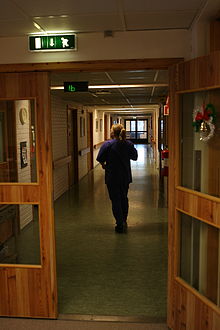Make Your Home Greener To Save Yourself Some Green

Replace your old thermostat with a programmable one. You can program your indoor climate control system to automatically use less energy during times of the day when there’s not usually anyone at home, which can cut your energy bill by up to 10 percent.
Seal cracks around windows and doors. This means less of your conditioned air, whether it’s hot or cool, escapes outside. That lowers the energy your climate control system needs to maintain the same temperature. Some air circulation, however, is necessary to keep your indoor air from becoming stagnant, unhealthy, and even prone to mildew and mold. So, avoid over-sealing your house.
Install a more efficient water heater. A tankless, or demand, water heater uses less energy than a water heater with a tank because it only heats the amount of hot water that you’re actually using. Tank water heaters keep a certain amount of water heated even if you aren’t using any hot water at all, which spends energy, and money, for no good reason. A solar water heater is another way to save a bundle on energy costs, as it uses free energy from the sun to provide you with hot water.
Change out your old light bulbs for more efficient bulbs. Compact fluorescent bulbs (CFLs) and LED bulbs both last longer (CFLs last up to three times longer, and LEDs should last at least 25 times longer) than traditional incandescent bulbs. They also use less energy to provide the same amount of light. Plus, buying more efficient bulbs means not having to replace your light bulbs as often.
Install more efficient windows. There are all kinds of energy-efficient features available on windows now. Solar films block heat energy from entering your house and raising your cooling bill. Some windows are designed to keep heat energy from escaping houses in cooler locations. Customize your windows to your energy needs as a way to save money and use less energy.
To lower water bills, fix any leaks in faucets, hoses and shower heads. While you’re at it, replace your old water fixtures with low flow ones. And don’t forget your toilet, which consumes a large percentage of the water used by any household. Modern low flow toilets and shower heads provide good water pressure while saving water. You can even convert your old toilet yourself by retrofitting the tank with inexpensive parts from the hardware store.
Replace old appliances with more efficient ones. The Energy Star rating is becoming more and more common on modern appliances, so when you need to get rid of old appliances, be sure to choose replacements designed to suit your lifestyle and to deliver more performance at lower energy rates.
Don’t consume energy with things you aren’t using. That includes turning off lights when you leave the room, of course, but don’t forget to unplug appliances that consume energy even when they’re not on. You can even buy power strips that will help you power down your energy-sucking appliances by automatically sensing when you turn off a specific appliance, which is when the power strip also turns off the other appliances you have plugged in to it.
The above ideas provide you with some great, easy ways to make your home use less resources and cost you less money. All of these ideas are included in the general topic of green home design. Energy and water aren’t free, after all, and being environmentally friendly isn’t about following a new trend– it’s about smart consumption and smart spending.
